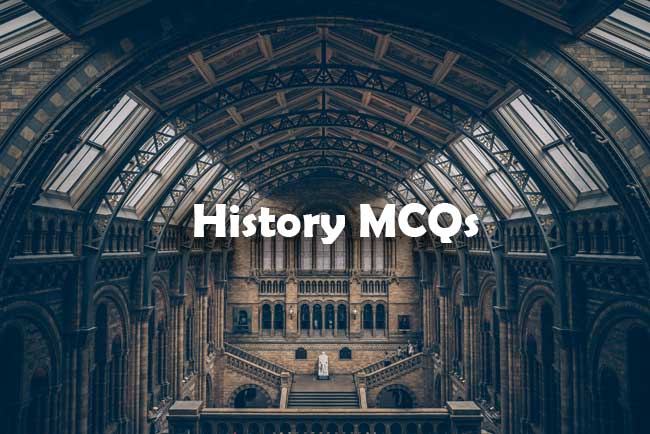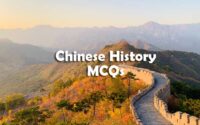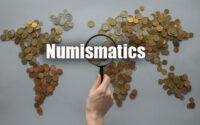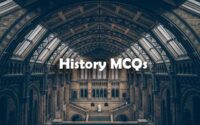BPSC History Questions
Find the direct download link for BPSC History Questions paper pdf in the section below. Aspirants who are looking for BPSC History General Knowledge Papers can find in the table below. Are you searching for the Bihar Public Service Commission History Sample Papers for starting exam preparation?

Don’t worry. We attached the free downloading links of Bihar Public Service Commission History General Knowledge Old Papers. By referring the Last 5 years Bihar Public Service Commission History Previous Question Papers, candidates can analyse the exam pattern.
BPSC History Questions Papers will help you to get a good score in the exam. By clicking on the below-enclosed links, you can download the BPSC History Questions Papers with solutions in the form of Pdf.
History Questions for BPSC
1. Which of the following ports was established during Pallava times ?
(A) Nagapattinam
(B) Kaveripattinam
(C) Mamallapuram
(D) Devanamapattinam
2. Into how many classes did Megasthenes divide Indian society ?
(A) Four
(B) Five
(C) Six
(D) Seven
3. Mahismati was the capital of the ………………. Mahajanapada.
(A) Southern Avanti
(B) Northern Avanti
(C) Kosala
(D) Anga
4. During the time of which King was the Fourth Buddhist Council held ?
(A) Ashoka
(B) Kanishka
(C) Skandagupta
(D) Harshavardhana
5. In which year did the Bijapur sultanate capture Goa from the Vijayanagar Empire ?
(A) 1487
(B) 1489
(C) 1490
(D) 1491
6. Which rulers were described as “Lords of the Jewelled throne of Karnataka ?
(A) The Chalukyas of Badami
(B) The Cholas
(C) The Rashtrakutas of Manyakheda
(D) The Wodeyars of Mysore
7. The head of the Revenue Department during the Mughal empire was ……………………. .
(A) Diwan-i-Kul
(B) Mir Bakshi
(C) Khan-i-Saman
(D) Mushrif-i-Mumalik
8. The maximum share of the Chouth collected during the period of the Maratha confederacy went to :
(A) Peshwa
(B) Chhatrapati
(C) Sardars
(D) Pant Sachiv
9. The Persian translation of the 52 Upanishads undertaken by Dara Shukoh was entitled :
(A) Seirrul Asrar
(B) Ain-i-Akbari
(C) Rehla
(D) Tuzuk-i-Jahangiri
10. The theory of Wahdat-ash-Shuhud is associated with :
(A) Sirhindi
(B) Isami
(C) Minhaj Siraj
(D) Nizamuddin Auliya
11. The historian who wrote the Futuhus- Salatin was :
(A) Isami
(B) Shamsuddin Siraj Afif
(C) Ziauddin Barani
(D) Minhaj-us-Siraj
12. The Sufi order which was popularised in India by the Mughal Emperor Babur was :
(A) Naqshbandiya
(B) Qadiriya
(C) Suhrawardi
(D) Chishti
13. The Gol Gumbaz, the largest dome in India, was built by the Bijapur Sultans in the year :
(A) 1660
(B) 1665
(C) 1670
(D) 1680
14. In which battle did the Deccani Sultans defeat the Vijayanagar ruler ?
(A) The Battle of Talikota
(B) The Battle of Lakkundi
(C) The Battle of Haldighati
(D) The Battle of Takkolam
15. Among the following Bhakti saints, whose verses were incorporated in the Guru Granth Sahib ?
(A) Eknath
(B) Namdev
(C) Tukaram
(D) Ramdas
16. The Huzur Daftar was :
(A) The office of the Nyayadhisha
(B) The King’s Court at Satara
(C) The Peshwa’s Secretariat at Pune
(D) The office of the Mamlatdar
17. The system of subsidiary alliance was introduced by :
(A) Warren Hastings
(B) Arthur Wellesley
(C) John Malcolm
(D) Lord Dalhousie
18. Who among the following depicted Vishnubuwa Brahmachari’s “Vedokta Dharmaprakash” as ‘Utopian Socialism’ ?
(A) S.D. Jawadekar
(B) Acharya P.K. Atre
(C) A.S. Altekar
(D) S.G. Bhagwat
19. The famous Parliament of religion (1893) was held at ……………….. .
(A) New York
(B) Pennsylvania
(C) Chicago
(D) New Jersey
20. The first Railway line in India was laid in the year ………………….. .
(A) 1842
(B) 1853
(C) 1863
(D) 1873
|
More History Questions for Preparation
|
|
| UPSC | TNPSC |
| GPSC | WBCS |
| NDA | SSC CHSL |
| DSSB | SSC CGL |
| AFCAT | MTS |
| RRB NTPC | MPSC |
| MPPSC | CDS |
| BPSC | |
21. The First Railway in the world was opened in England in the year ………………. .
(A) 1825
(B) 1853
(C) 1854
(D) 1855
22. The General Service Enlistment Act was passed under the Governor Generalship of ……………….. .
(A) Lord Canning
(B) Lord Auckland
(C) Lord Ellenborough
(D) Lord Amherst
23. Which of the following was the main basis of Dadabhai Naoroji’s calculation of the drain ?
(A) Difference between Import and Export
(B) Difference between Revenue Surplus
(C) Difference between Income and Expenditure
(D) Extravagant expenditure
24. Who wrote ‘Jatibhed Viveksar’ ?
(A) Dinkarrao Jawalkar
(B) Bhaskarrao Jadhav
(C) Krishnarao Bhalekar
(D) Tukaram Tatya Padval
25. Who described Bhakti movement as “Protestant Hinduism’ ?
(A) Mahatma Jyotirao Phule
(B) Lokhitawadi Gopal Hari Deshmukh
(C) R.G. Bhandarkar
(D) Justice M.G. Ranade
26. Who among the following historians argued that social trajectory of Indian history is tribe-peasantscaste?
(A) Dharmanand Kosambi
(B) Damodar D. Kosambi
(C) A.S. Altekar
(D) K.P. Jayaswal
27. Which of the following organisations ushered its motto “Educate, Agitate and Organise” ?
(A) Bahishkrit Hitakarini Sabha
(B) Independent Labour Party
(C) Depressed Classes Association
(D) Republican Party of India
28. What is “Apartheid’ ?
(A) A system of segregation and discrimination on the basis of race
(B) System of European caste hierarchy
(C) Religious segregation
(D) Segregation on the basis of culture
29. The Commonwealth of Nations is related to ……………….. .
(A) The Latin American countries
(B) The former British Empire
(C) Association of European Community
(D) Membership of United Nations
30. What is Confucianism ?
(A) A theory of politics
(B) A theory of economics
(C) A system of education
(D) A philosophy of morality and ethics
31. Who among the following is not associated with early socialism ?
(A) Robert Owen
(B) Emile Durkheim
(C) Charles Fourier
(D) Henri de Saint-Simon
32. The Ninety-Five Theses were related to :
(A) Jeremy Bentham
(B) James Mill
(C) Martin Luther
(D) Herbert Spencer
33. Who coined the slogan ‘the right to work’ in the Nineteenth century ?
(A) Joseph Mazzini
(B) Louis Blanc
(C) T.H. Green
(D) Karl Marx
34. Which historian argued that caste is an innovation of the colonial mind ?
(A) Nicholas Dirks
(B) Ranajit Guha
(C) Dipesh Chakravarti
(D) B.D. Chattopadhyay
35. What do you mean by Historicism ?
(A) To believe that there is no causality in history
(B) To believe that there are inclusive, demonstrable and determining patterns in the process of historical change
(C) To believe in the intervention of God in history
(D) To believe in fatalism
36. Annale’s Historiography originated in which country ?
(A) France
(B) Britain
(C) America
(D) Germany
37. According to Edward Said, what is the defining feature of orientalism ?
(A) Western imperialism
(B) Eastern reaction to western domination
(C) East-west as ontological divide
(D) South-North as epistemological divide
38. Among the following historians, who employed structural-linguistics to unravel colonial documents ?
(A) Ranajit Guha
(B) David Hardiman
(C) Rosalind O’ Hanlon
(D) David Washbrook
39. Which historian explained Maratha politics through ‘Fitna Theory’ ?
(A) Stewart Gordon
(B) André Wink
(C) Hiroyuki Kotani
(D) A.R. Kulkarni
40. According to historian V.K. Rajwade what is ‘Maharashtra Dharma’ ?
(A) Valiant Hinduism
(B) Valiant Maratha Dharma
(C) Ideology of Varkari Sect
(D) Ideology of Bhakti Cult
| Ancient India | Modern India |
| Medieval India | World History |
41. Neolithic age was also called as Neolithic revolution by :
(A) V. Gordon Childe
(B) H.D. Sankalia
(C) J.F. Fleet
(D) Mortimer Wheeler
42. Which of the following was not one of the Harappan sites related to the maritime activities ?
(A) Soktakoh
(B) Desalpur
(C) Lothal
(D) Balakot
43. Which of the following has not been found in the Indus Civilization sites ?
(A) Wheat
(B) Sugarcane
(C) Barley
(D) Maize
44. Megaliths of South India are associated with which of the following ages ?
(A) Chalcolithic Age
(B) Mesolithic Age
(C) Neolithic age
(D) Iron age
45. The territory of the Assakas (Ashmakas) was situated on the bank of the river :
(A) Krishna
(B) Tapi
(C) Godavari
(D) Bhima
46. Lord Gautam Buddha delivered first sermon at .
(A) Gaya
(B) Sarnath
(C) Kushinagar
(D) Shravasti
47. Where in India do we first get inscriptions about land grants ?
(A) Central India, Northern Deccan and Andhra
(B) Eastern India, Eastern Bengal and Orissa
(C) Southern India : Tamil Nadu and Karnataka
(D) Kerala
48. Recently in which place has broken relief sculpture of King Ashoka been discovered ?
(A) Kanaganahalli in Karnataka
(B) Mahasthan in Uttar Pradesh
(C) Kumraha in Bihar
(D) Nittur in Karnataka
49. The ‘Kandhar’ edict of Ashoka is written in …………………… .
(A) Greek and Aramaic
(B) Greek and Sanskrit
(C) Greek and Persian
(D) Greek and Hebrew
50. Where the evidence of the settlement of Roman traders in India has been discovered ?
(A) Arikamedu
(B) Tamralipti
(C) Bhrigukachcha
(D) Barbaricum



